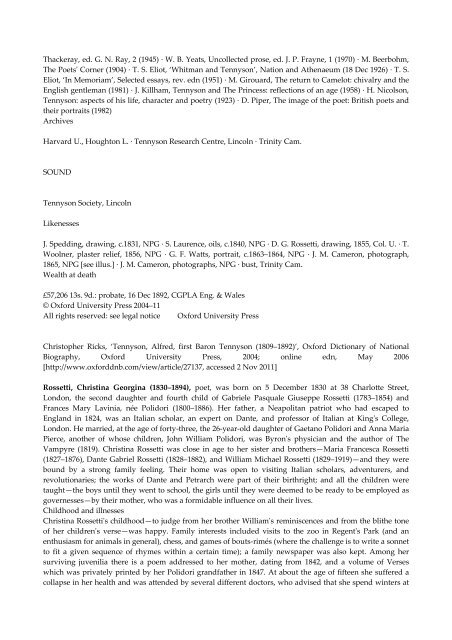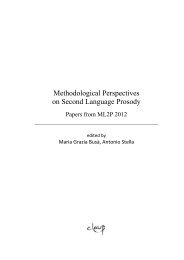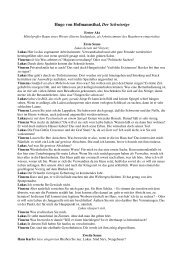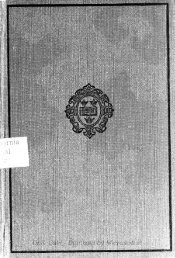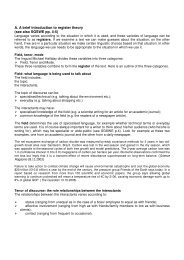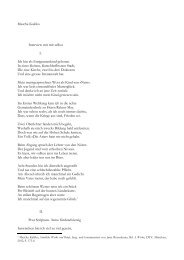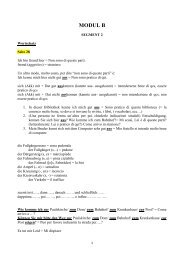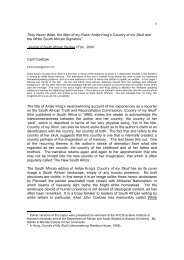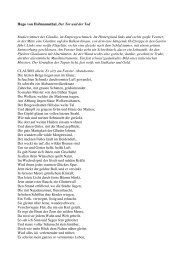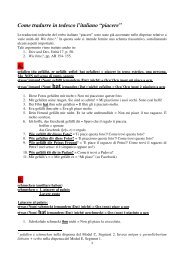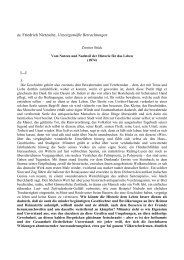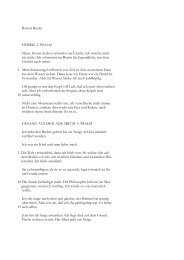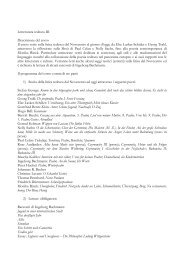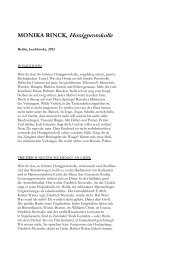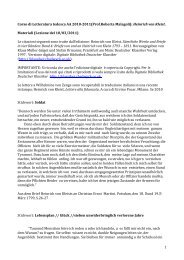The lives of the poets from The Dictionary of National Biography ...
The lives of the poets from The Dictionary of National Biography ...
The lives of the poets from The Dictionary of National Biography ...
You also want an ePaper? Increase the reach of your titles
YUMPU automatically turns print PDFs into web optimized ePapers that Google loves.
Thackeray, ed. G. N. Ray, 2 (1945) ∙ W. B. Yeats, Uncollected prose, ed. J. P. Frayne, 1 (1970) ∙ M. Beerbohm,<br />
<strong>The</strong> Poetsʹ Corner (1904) ∙ T. S. Eliot, ‘Whitman and Tennyson’, Nation and A<strong>the</strong>naeum (18 Dec 1926) ∙ T. S.<br />
Eliot, ‘In Memoriam’, Selected essays, rev. edn (1951) ∙ M. Girouard, <strong>The</strong> return to Camelot: chivalry and <strong>the</strong><br />
English gentleman (1981) ∙ J. Killham, Tennyson and <strong>The</strong> Princess: reflections <strong>of</strong> an age (1958) ∙ H. Nicolson,<br />
Tennyson: aspects <strong>of</strong> his life, character and poetry (1923) ∙ D. Piper, <strong>The</strong> image <strong>of</strong> <strong>the</strong> poet: British <strong>poets</strong> and<br />
<strong>the</strong>ir portraits (1982)<br />
Archives<br />
Harvard U., Houghton L. ∙ Tennyson Research Centre, Lincoln ∙ Trinity Cam.<br />
SOUND<br />
Tennyson Society, Lincoln<br />
Likenesses<br />
J. Spedding, drawing, c.1831, NPG ∙ S. Laurence, oils, c.1840, NPG ∙ D. G. Rossetti, drawing, 1855, Col. U. ∙ T.<br />
Woolner, plaster relief, 1856, NPG ∙ G. F. Watts, portrait, c.1863–1864, NPG ∙ J. M. Cameron, photograph,<br />
1865, NPG [see illus.] ∙ J. M. Cameron, photographs, NPG ∙ bust, Trinity Cam.<br />
Wealth at death<br />
£57,206 13s. 9d.: probate, 16 Dec 1892, CGPLA Eng. & Wales<br />
© Oxford University Press 2004–11<br />
All rights reserved: see legal notice Oxford University Press<br />
Christopher Ricks, ‘Tennyson, Alfred, first Baron Tennyson (1809–1892)’, Oxford <strong>Dictionary</strong> <strong>of</strong> <strong>National</strong><br />
<strong>Biography</strong>, Oxford University Press, 2004; online edn, May 2006<br />
[http://www.oxforddnb.com/view/article/27137, accessed 2 Nov 2011]<br />
Rossetti, Christina Georgina (1830–1894), poet, was born on 5 December 1830 at 38 Charlotte Street,<br />
London, <strong>the</strong> second daughter and fourth child <strong>of</strong> Gabriele Pasquale Giuseppe Rossetti (1783–1854) and<br />
Frances Mary Lavinia, née Polidori (1800–1886). Her fa<strong>the</strong>r, a Neapolitan patriot who had escaped to<br />
England in 1824, was an Italian scholar, an expert on Dante, and pr<strong>of</strong>essor <strong>of</strong> Italian at Kingʹs College,<br />
London. He married, at <strong>the</strong> age <strong>of</strong> forty‐three, <strong>the</strong> 26‐year‐old daughter <strong>of</strong> Gaetano Polidori and Anna Maria<br />
Pierce, ano<strong>the</strong>r <strong>of</strong> whose children, John William Polidori, was Byronʹs physician and <strong>the</strong> author <strong>of</strong> <strong>The</strong><br />
Vampyre (1819). Christina Rossetti was close in age to her sister and bro<strong>the</strong>rs—Maria Francesca Rossetti<br />
(1827–1876), Dante Gabriel Rossetti (1828–1882), and William Michael Rossetti (1829–1919)—and <strong>the</strong>y were<br />
bound by a strong family feeling. <strong>The</strong>ir home was open to visiting Italian scholars, adventurers, and<br />
revolutionaries; <strong>the</strong> works <strong>of</strong> Dante and Petrarch were part <strong>of</strong> <strong>the</strong>ir birthright; and all <strong>the</strong> children were<br />
taught—<strong>the</strong> boys until <strong>the</strong>y went to school, <strong>the</strong> girls until <strong>the</strong>y were deemed to be ready to be employed as<br />
governesses—by <strong>the</strong>ir mo<strong>the</strong>r, who was a formidable influence on all <strong>the</strong>ir <strong>lives</strong>.<br />
Childhood and illnesses<br />
Christina Rossettiʹs childhood—to judge <strong>from</strong> her bro<strong>the</strong>r Williamʹs reminiscences and <strong>from</strong> <strong>the</strong> bli<strong>the</strong> tone<br />
<strong>of</strong> her childrenʹs verse—was happy. Family interests included visits to <strong>the</strong> zoo in Regentʹs Park (and an<br />
enthusiasm for animals in general), chess, and games <strong>of</strong> bouts‐rimés (where <strong>the</strong> challenge is to write a sonnet<br />
to fit a given sequence <strong>of</strong> rhymes within a certain time); a family newspaper was also kept. Among her<br />
surviving juvenilia <strong>the</strong>re is a poem addressed to her mo<strong>the</strong>r, dating <strong>from</strong> 1842, and a volume <strong>of</strong> Verses<br />
which was privately printed by her Polidori grandfa<strong>the</strong>r in 1847. At about <strong>the</strong> age <strong>of</strong> fifteen she suffered a<br />
collapse in her health and was attended by several different doctors, who advised that she spend winters at


